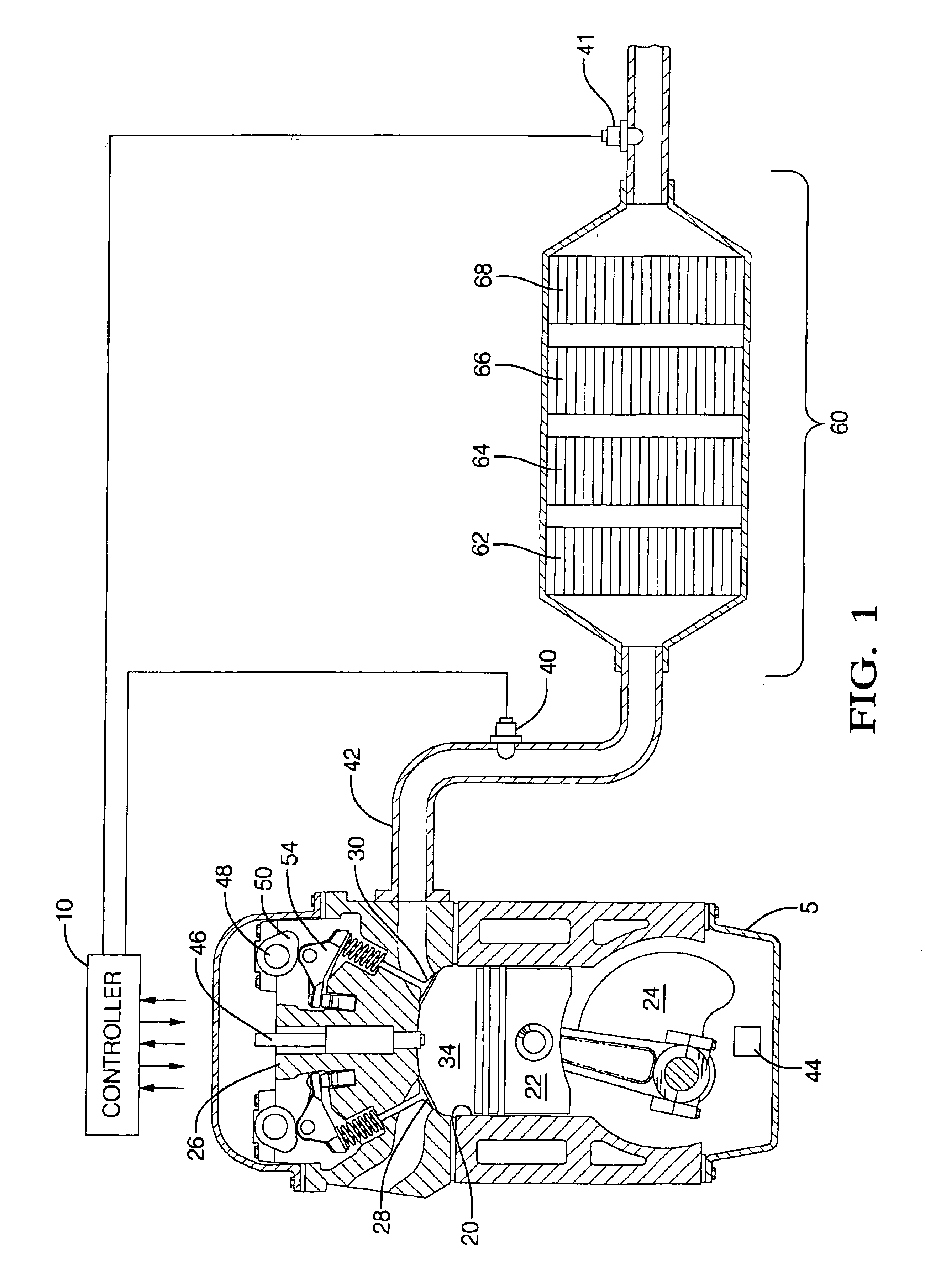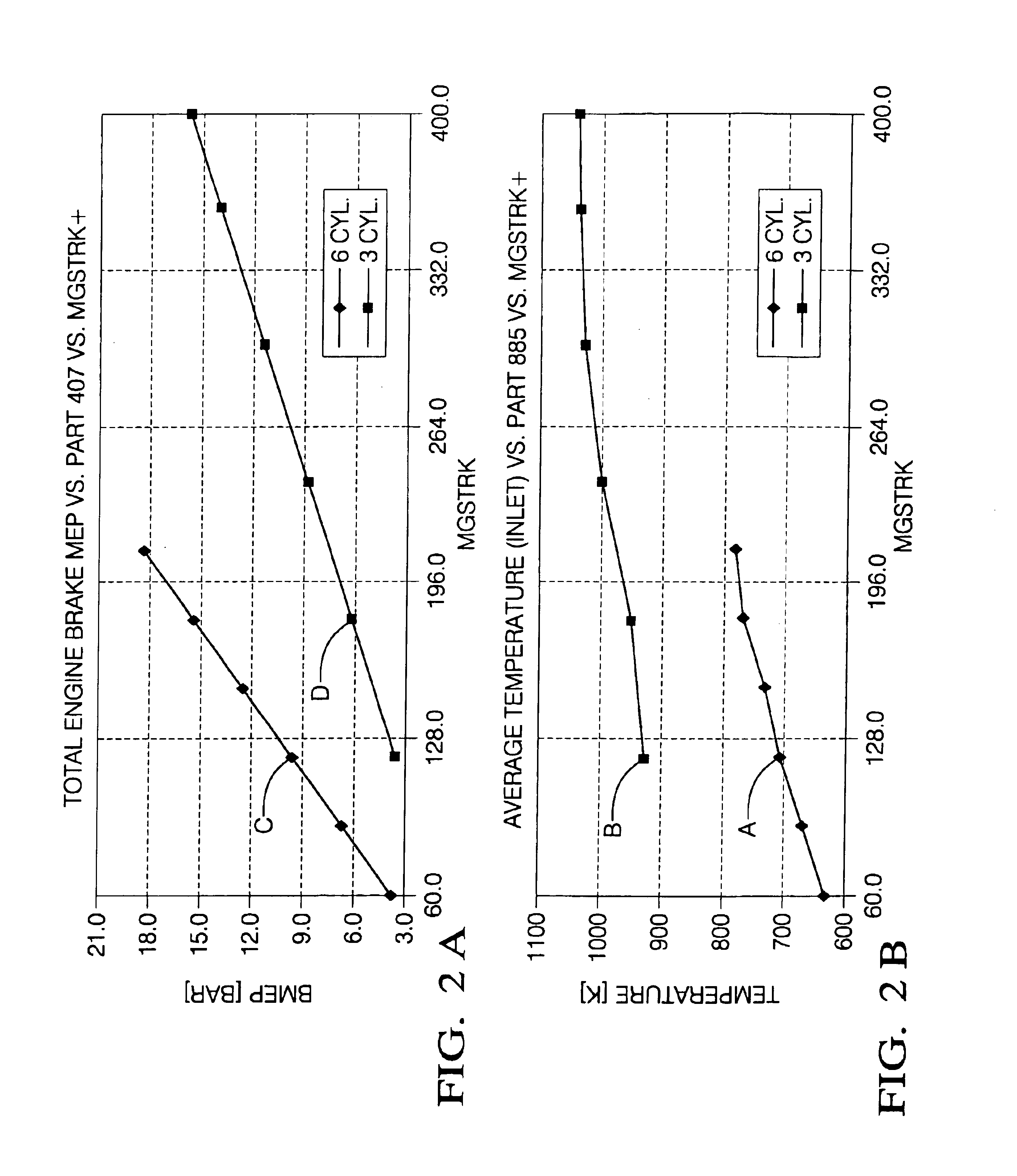Engine cylinder deactivation to improve the performance of exhaust emission control systems
a technology of exhaust emission control and engine cylinders, which is applied in the direction of electrical control, machine/engine, exhaust treatment electric control, etc., can solve the problems of limited acceptance of compression-ignition engines and direct-injection spark-ignition engines, high engine-out emissions of nox and pm, and low engine-out emissions of co and hc, etc., to increase the exhaust gas temperature, increase the fuel charge, and maintain the effect of engine operation
- Summary
- Abstract
- Description
- Claims
- Application Information
AI Technical Summary
Benefits of technology
Problems solved by technology
Method used
Image
Examples
specific embodiments
I. Light-duty Diesel Engine
[0050]When system is a light-duty diesel (i.e. compression-ignition) engine, the system comprises the engine 5 with the controller 10, the cylinder deactivation system, and the aftertreatment system 60. The aftertreatment system 60 is preferably comprised of an oxidation catalyst 62, a NOx adsorber catalyst 64, a second oxidation catalyst 66, and a diesel particulate trap 68. Each of the above-mentioned elements has been described previously. The light-duty diesel engine 5 with the controller 10, the cylinder deactivation system, and the aftertreatment system 60 is preferably operated in the NOx adsorption mode, the NOx reduction mode, the purge mode, and the desulfation mode, as described previously.
II. Heavy-duty Diesel Engine
[0051]When system is a heavy-duty diesel (i.e. compression-ignition) engine, the system comprises the engine 5 with the controller 10, the cylinder deactivation system, and the aftertreatment system 60. The aftertreatment system 60 ...
PUM
 Login to View More
Login to View More Abstract
Description
Claims
Application Information
 Login to View More
Login to View More - R&D
- Intellectual Property
- Life Sciences
- Materials
- Tech Scout
- Unparalleled Data Quality
- Higher Quality Content
- 60% Fewer Hallucinations
Browse by: Latest US Patents, China's latest patents, Technical Efficacy Thesaurus, Application Domain, Technology Topic, Popular Technical Reports.
© 2025 PatSnap. All rights reserved.Legal|Privacy policy|Modern Slavery Act Transparency Statement|Sitemap|About US| Contact US: help@patsnap.com



